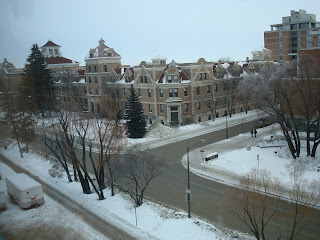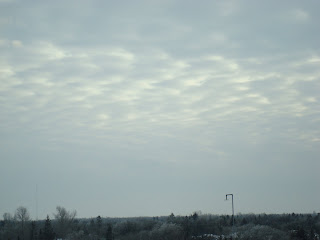



Snowshoes were slowly adopted by Europeans in what became the United States and Canada, with the French voyageurs well in advance of British settlers. Superior French snowshoeing skill almost turned the French and Indian War, a conflict that saw two engagements named the Battle on Snowshoes, to their favor.
But the British were quick learners. The Oxford English Dictionary reports the term being used in English as early as 1674. Sixteen years later, after a French-Indian raiding party attacked a British settlement near what is today Schenectady, New York, the British took to their own snowshoes and pursued the attackers for almost 50 miles (90 km), ultimately recovering both people and goods taken by their attackers.
The "teardrop" snowshoes worn by lumberjacks are about 40 inches (1 m) long and broad in proportion, while the tracker's shoe is over 5 feet long (1.5 m) and very narrow. This form, the stereotypical snowshoe, resembles a tennis racquet, and indeed the French term is raquette de neige.
This form was copied by the Canadian snowshoe clubs of the late 18th century. Originally founded for military training purposes, they became the earliest recreational users of snowshoes.
The snowshoe clubs such as the Montreal Snowshoe club (1840) shortened the teardrop to about 40 inches long (110 cm) and 15 to 18 inches broad (about 40 to 45 cm), slightly turned up at the toe and terminating in a kind of tail behind. This is made very light for racing purposes, but much stouter for touring or hunting. The tail keeps the shoe straight while walking.
Another variant, the "bearpaw," ends in a curved heel instead of a tail. While many early enthusiasts found this more difficult to learn on, as they were thicker in the middle and rather cumbersome, they did have the advantage of being easier to pack and nimbler in tight spaces. Two forms of traditional bearpaw snowshoes developed; an eastern version used by "spruce gummers" consisting of an oval frame with wooden cross braces, and a western version with a rounded triangular frame and no wooden bracing.
Traditional snowshoes are made of a single strip of some tough wood, usually white ash, curved round and fastened together at the ends and supported in the middle by a light cross-bar, the space within the frame thus made being filled with a close webbing of dressed caribou or neat's-hide strips, leaving a small opening just behind the cross-bar for the toe of the moccasined foot. They are fastened to the moccasin by leather thongs, sometimes by buckles. Such shoes are still made and sold by native peoples.
Try Snowshoeing at FortWhyte,
FortWhyte Alive is a beautiful nature centre located on 600 acres of land that features forest, prairies, lakes, and wetlands. Imagine…Fresh snow squeaking under your feet as you walk through the forest. Birds flitting from branch to branch, and a deer peeking at you from behind a tree. Your group arrives at a clearing, and you stop for a rest. Aren’t you glad you didn’t sleep in this morning? Join a knowledgeable guide for one (or all!) of these great adventures. Each hike will take you on a new trail. To see FortWhyte photo galleries, visit their web site at: http://www.fortwhyte.org/.
Source: http://en.wikipedia.org/wiki/Snowshoe







